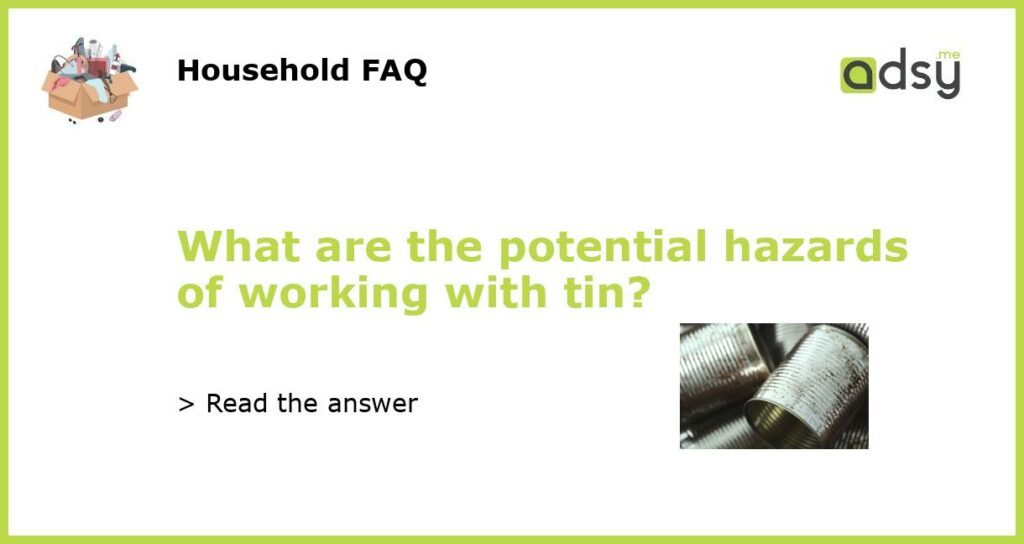Potential hazards of working with tin
Tin is a versatile and widely used metal in various industries. It is commonly used in soldering, metal plating, and in the manufacturing of alloys. Despite its usefulness, working with tin can pose several hazards to human health and the environment. This article explores the potential hazards of working with tin and the precautions that can be taken to mitigate these risks.
Health hazards
When tin is in its solid form, it is relatively non-toxic. However, certain processes such as soldering and metal plating can generate tin fumes or dust, which can be hazardous if inhaled or ingested. Inhalation of tin fumes can lead to metal fume fever, which is characterized by fever, chills, muscle aches, and fatigue. Long-term exposure to tin fumes may also cause respiratory issues such as bronchitis and pulmonary fibrosis.
Furthermore, tin contamination can occur when workers handle tin-coated materials or alloys that contain tin. Contact with tin-contaminated surfaces can lead to skin irritation and dermatitis. Prolonged skin exposure to tin can also result in the condition known as tin ear, characterized by flaky and itchy skin around the ears.
Environmental impact
The production and processing of tin can have negative environmental consequences. Tin mining, for example, can result in deforestation, habitat destruction, and soil erosion. Additionally, the extraction of tin from its ores often involves the use of chemicals, such as acids and solvents, which can contaminate soil and water sources if not properly managed.
Furthermore, the disposal of tin waste, such as slag and residues from smelting processes, can pose environmental risks. These waste materials may contain other hazardous substances, such as heavy metals or toxic chemicals, which can leach into the soil and water, potentially harming ecosystems and human populations.
Fire and explosion hazards
Tin is not flammable itself, but it can react with certain substances to form flammable or explosive compounds. For example, tin can react with strong oxidizing agents, such as potassium chlorate or potassium permanganate, to form explosive compounds. Therefore, it is crucial to handle and store tin and its associated materials, such as solvents or chemicals, with caution and follow proper safety procedures to prevent fires and explosions.
Electrical hazards
Tin is commonly used in electrical applications, such as soldering and electrical connectors. While working with electrical equipment or circuits that involve tin, there is a risk of electric shock or short circuits if not handled properly. It is vital to follow electrical safety guidelines and use appropriate protective equipment, such as insulated gloves and goggles, to minimize the risk of electrical accidents.
Precautions and safety measures
To minimize the hazards associated with working with tin, several precautions and safety measures can be implemented:
- Proper ventilation: Ensure adequate ventilation in work areas where tin fumes or dust may be generated. The use of local exhaust ventilation systems or respirators can help reduce exposure to airborne contaminants.
- Personal protective equipment: Wear appropriate personal protective equipment, such as gloves, goggles, and respiratory protection, to prevent skin and eye contact with tin and its associated materials.
- Safe handling and storage: Follow safe handling procedures and store tin and its associated materials in designated areas away from ignition sources and incompatible substances.
- Training and awareness: Provide training to workers on the hazards of working with tin and educate them about safe work practices and emergency procedures.
- Proper waste management: Implement proper waste management practices to ensure the proper disposal or recycling of tin waste materials, minimizing their impact on the environment.
By implementing these precautions and safety measures, the potential hazards of working with tin can be effectively mitigated, protecting the health and well-being of workers and minimizing the environmental impact.






